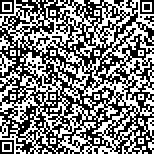| 引用本文: |
刘应蛟,楚世峰,胡耀梅,裴刚,周小江,陈乃宏.玄参中阿魏酸和肉桂酸的含量测定及神经保护活性研究[J].湖南中医药大学学报,2018,38(12):1393-1397[点击复制] |
|
| |
|
|
| 本文已被:浏览 2996次 下载 1499次 |
| 玄参中阿魏酸和肉桂酸的含量测定及神经保护活性研究 |
| 刘应蛟,楚世峰,胡耀梅,裴刚,周小江,陈乃宏 |
| (湖南中医药大学药学院, 湖南 长沙 410208;湖南省中药饮片标准化及功能工程技术研究中心, 湖南 长沙 410208;中国医学科学院北京协和医学院药物研究所, 北京 100050) |
| 摘要: |
| 目的 建立中药玄参中阿魏酸和肉桂酸的HPLC含量测定方法,观察其水解前后的变化,以及对鱼藤酮和去血清模型的神经保护作用。方法 采用Agilent 5 TC-C18柱(4.6 mm×250 mm,5 μm),以乙腈-0.05%磷酸溶液为流动相,梯度洗脱,检测波长为290 nm,柱温30℃;建立体外鱼藤酮及去血清模型,用不同浓度阿魏酸和肉桂酸预处理,以MTT法测定细胞存活率。结果 阿魏酸和肉桂酸水解前后回收率分别为98.20%和91.41%、97.22%和90.96%,RSD均未超过2.0%,6批不同产地药材中阿魏酸和肉桂酸水解前后的含量分别为0.028%~0.041%和0.073%~0.102%、0.035%~0.142%和0.163%~0.336%。阿魏酸(10 μmol/L)可显著增加去血清和鱼藤酮处理细胞的存活率(P<0.01);肉桂酸(0.1 μmol/L)能明显增加鱼藤酮处理细胞的存活率(P<0.05)。结论 本方法简便、精密度高、重现性好,为玄参中具神经保护作用的阿魏酸和肉桂酸动态变化提供科学依据。 |
| 关键词: 玄参 阿魏酸 肉桂酸 高效液相色谱 神经保护 |
| DOI:10.3969/j.issn.1674-070X.2018.12.009 |
| 投稿时间:2018-07-25 |
| 基金项目:国家中医药标准化项目(ZYBZH-Y-HUN-24,ZYBZH-Y-HEB-16);湖南省教育厅创新平台开放基金项目(15K091);湖南省重点研究计划项目(2017NK2261)。 |
|
| Determination of Ferulic Acid and Cinnamic Acid in Scrophularia ningpoensis and Their Neuroprotective Activity |
| LIU Yingjiao,CHU Shifeng,HU Yaomei,PEI Gang,ZHOU Xiaojiang,CHEN Naihong |
| (School of Pharmacy, Hunan University of Chinese Medicine, Changsha, Hunan 410208, China;Hunan Engineering Technology Center of Standardization and Function of Chinese Herbal Decoction Pieces, Changsha, Hunan 410208, China;Institute of Materia Medica, Chinese Academy of Medical Sciences and Peking Union Medical College, Beijing 100050, China) |
| Abstract: |
| Objective To develop a high-performance liquid chromatography-based method for determination of ferulic acid and cinnamic acid in Scrophularia ningpoensis, to evaluate their changes after hydrolysis, and to analyze their neuroprotective effects on rotenone-treated and serum-free cell culture models.Methods The content of ferulic acid and cinnamic acid was determined using an Agilent 5TC-C18 column (250 mm×4.6 mm, 5 μm) with a mobile phase of acetonitrile-0.05% phosphoric acid for gradient elution at a detection wavelength of 290 nm and a column temperature of 25℃. Pretreated with different concentrations of ferulic acid and cinnamic acid, rotenone-treated and serum-free cell culture models were established in vitro. Cell viability was determined by MTT assay.Results The recovery rates before and after hydrolysis were 98.20% and 91.41% for ferulic acid, and 97.22% and 90.96% for cinnamic acid, respectively. The relative standard deviations were both less than 2.0%. In six batches of medicinal materials originating from different places, the content before and after hydrolysis was 0.028%-0.041% and 0.073%-0.102% for ferulic acid, and 0.035%-0.142% and 0.163%-0.336% for cinnamic acid, respectively. Ferulic acid (10 μmol/L) significantly increased the viability of cells treated by rotenone and serum deprivation (P<0.01). Cinnamic acid (0.1 μmol/L) significantly increased the viability of cells treated by rotenone (P<0.05).Conclusion This method is simple, highly accurate, and reproducible, which provides a scientific basis for the dynamic changes in two components with neuroprotective activity, ferulic acid and cinnamic acid, in Scrophularia ningpoensis. |
| Key words: Scrophularia ningpoensis ferulic acid cinnamic acid high-performance liquid chromatography neuroprotective |
|

二维码(扫一下试试看!) |
|
|
|
|




